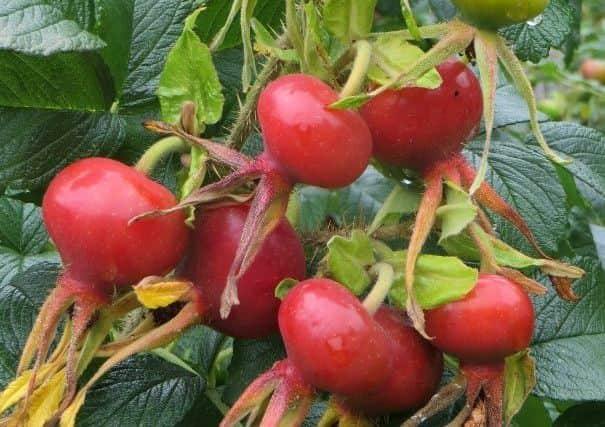Be prepared to share your fruit harvests


Our gardens have kept them well supplied since June and the feast continues.
It began in an ornamental border with the purple berries of Berberis darwinii, before moving on to ripening cotoneaster, which coincided with the first strawberries.
Advertisement
Hide AdAdvertisement
Hide AdIn between lay a battle of wits involving netting and a range of soft fruits.
You’d think that late September would offer some respite and windfall plums sate their appetite, but no, they’ve started on any apples with a hint of ripeness. Heaven forbid they should access the greenhouse grapes.
It’s not that we begrudge them a share of the spoils, even though the cultivation and maintenance is all down to us, if only they’d finish one fruit before moving on to the next.
Truth to tell, our reason for planting fruit trees and bushes, edible or otherwise, has always been threefold – fruit harvesting, attracting birds and visual satisfaction. It is the latter two that we eagerly anticipate as autumn unfolds.
Advertisement
Hide AdAdvertisement
Hide AdOrnamental crab apples and hip-bearing roses are looking so good as autumn deepens, and both will keep the bird population going well into the new year.
As the supply of elderberries, hips and haws currently abundant in surrounding countryside runs out, we will see more action in our gardens.
For the present it’s wall to wall enjoyment of the visual treat from three well-known hip-bearers; Rosa rugosa Frau Dagmar Hastrup, Rosa moyesii Geranium and Rosa glauca.
Even greater enjoyment comes from the dazzling crab apples with their garden display, bird attraction and jelly-making potential. The cultivars Golden Hornet, Butterball and John Downie are particularly stunning.
Advertisement
Hide AdAdvertisement
Hide AdOne of the main spin-offs from having a bird fruit-friendly garden suddenly appears in the form of assorted seedlings.
During the autumn-winter divide there’s a chance to clear away the rampant growth of summer, which held so many secrets. Once stripped bare, a myriad of fruit stones and pips, previously discarded by birds, reveal themselves as young plants.
Holly, cotoneaster, berberis, leycesteria, roses, et al, are there for the taking. Free plants to relocate or pass on to friends.
And don’t waste this annual windfall harvest. Get composting.
• Alnwick Garden Club meets in Alnwick Garden Pavilion on Tuesday, at 7.30pm. Come and join us for the start of a new session of talks and demonstrations.